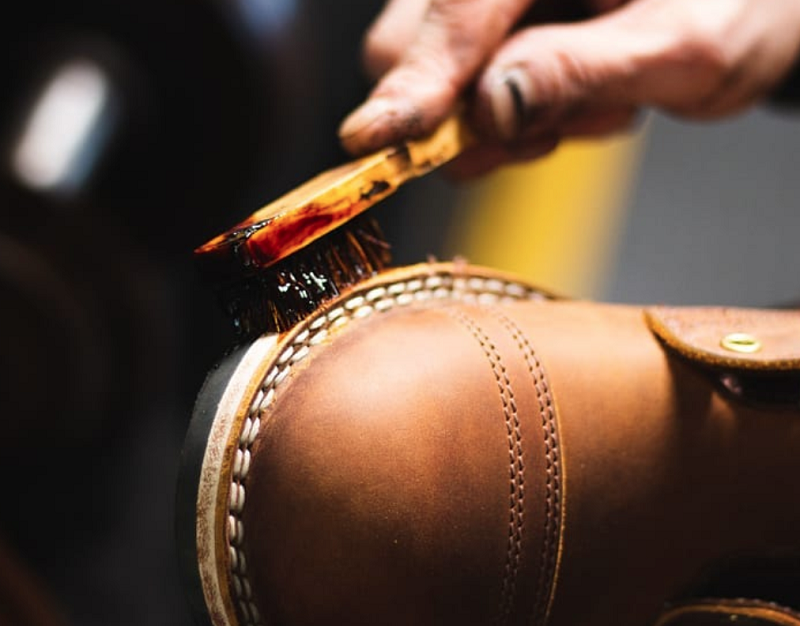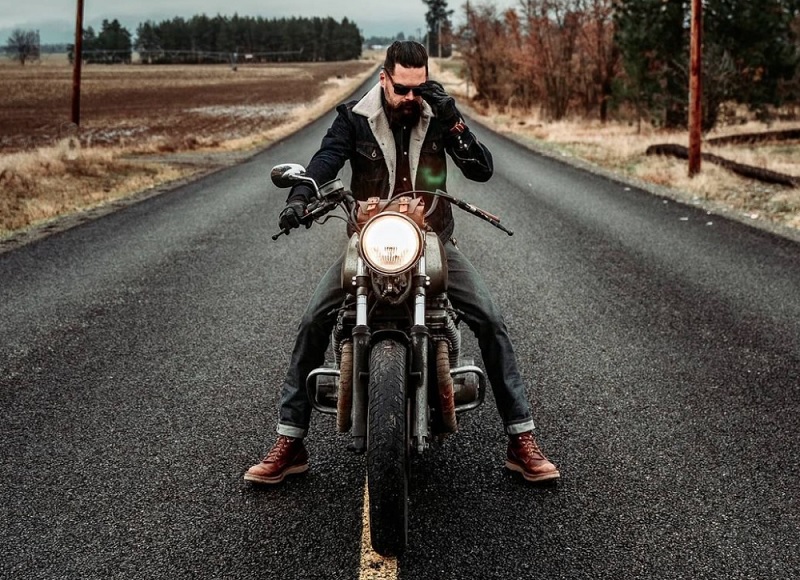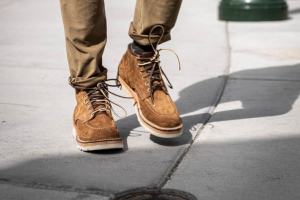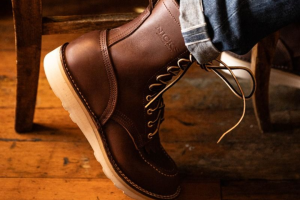Boot Construction And Waterproofing Work Boots: How They're Made Matters

How boots are made matters, and believe it or not, boot construction makes a significant difference when it comes to waterproofing. Granted, there's a lot more to it than that!
Ultimately, leather can't be made totally, 100 percent waterproof unless it's sealed in a material that is. Ultimately, the only completely waterproof boots are rubber boots, because the molecular structure of rubber is such that water doesn't permeate the material.
Also, bear in mind that your boots' waterproofing is only as good as the effort you make to make them waterproof. If you don't do your part, boot construction method, and boot care, only matters so much.
With that said, let's talk about why it matters how your work boots are made matters in terms of waterproofing, so you know what's what in the winter months or wet seasons.
Boot Construction And The Tiny Spaces Between Things

Boot construction is no mystery. You sew together the upper, and attach it to the sole. The question is how that's done.
The issue when it comes to waterproofing is how much space there is between the sole structure - including the outsole, the midsole, and the whole footbed - and the insole and the upper. The potential for more space to be created also matters.
Some boots and shoes are merely glued together. While this can create a tight seal, oxidation will occur over time. Depending on the adhesive used, eventually it becomes porous at the molecular level because that's how oxygen works...until it develops pores you can see.
Welted boots and/or stitch methods use stitching to attach the upper either directly to the outsole (such as the Blake stitch, a common construction for fashion shoes) or the upper to a midsole and the outsole such as a Goodyear welt, storm welt, or stitchdown construction.
Now, how that stitching is done determines the relative level of space between the layers of the boot or shoe. While each has positives and negatives in a broad comparison, there are some that are more susceptible to letting in water than others.
Blake/McKay stitching directly attaches the sole, midsole, upper and insole via stitching through the insole. While this does make a durable (and easily re-soled) shoe or boot, there is minimal seal against the elements and they let in moisture rather easily.
Which is why rubber overshoes used to be more of a thing.
The most durable footwear tends to be made with Goodyear/storm welt or stitchdown construction, and it so happens that these methods are the best for waterproofing.
How come?
The Welt And The Water
Welted boots, made using either a Goodyear or storm welt (which are basically the same thing) or a stitchdown construction, stitch the outsole, midsole and upper together around the entire boot.
What this does is seal the boot together all the way around, unless the boot is made with what's called a 270 welt (as opposed to a 360 welt) where the heel is glued on but the rest is stitched.
Some fashion boots (and even some supposed "work boots" made by some companies we won't mention...that are based in Portland) are made with that method, the supposed benefit being increased flexibility.
Now, the differences in terms of waterproofing are not hugely significant, but the differences in construction are.
Welted boots are made by stitching the upper to the midsole, the outsole to the midsole, and then a strip of material all the way around, which is the welt.
The difference between a storm welt and a Goodyear is a storm welt material covers the bottom of the upper where the upper meets the midsole. A Goodyear welt just places a strip of material there.
Stitchdown construction, however, does something entirely different.
In stitchdown construction, the bottom of the upper is crimped to form a skirting that sits directly atop the midsole. The upper, midsole and outsole are all stitched together. While it looks similar to a Goodyear welt, that isn't extra material that's been added around the outside.
So, what's the difference in terms of waterproofing?
The design of boot construction produces barriers to being permeated by water and debris. The fewer barriers there are, the fewer opportunities there are for molecules of water...and eventually droplets...to work their way in.
A traditional Goodyear welt is more susceptible to leakage than a storm welt, and stitchdown boots or shoes are less susceptible than a storm welt. A Goodyear welt allows water to get over the welt and leak into the upper, but a storm welt adds an additional barrier in that area.
Stitchdown construction, however, removes the need for that barrier, as the "welt" is actually the upper itself. Therefore, if you need your boots to keep out moisture, dirt, dust and possibly chemicals, work boots made with a stitchdown construction are the ones to buy.
Granted, how much does this matter? At first, not a whole lot. However, in the fullness of time, the stitching starts to loosen, partially with the break-in process and partially from sheer wear over time.
The longer you own and wear your work boots or shoes, the more the stitching will start to loosen, so a well-used and abused pair of serious work boots might start letting in moisture in a matter of months.
Especially if you buy boots with less than the best-quality stitching. Remember, price can be A selling point, but if it's THE selling point...you're going to get what you pay for. Even with casual or light duty boots, the difference in price point could be the difference of months to years of use.
Boot Care And Waterproofing Treatment Goes Only So Far

Of course, the waterproofing treatment you give your boots and how well you apply it also makes a difference. At that, a big one.
A lot of people tend to skip applying their boot grease or wax to the welt itself. Granted, it is kind of a pain! The common trick is to use a Q-tip to daub it and spread the grease or wax all the way around, which takes time.
Another boot care tip that some people overlook that also makes a difference with waterproofing is to use shoe trees or boot powder after wearing them. This is important as foot sweat, which has salt, acids and other minerals, can be slightly caustic.
In other words, if you aren't using cedar shoe trees or boot powder, your sweat can start to eat at the stitching through the insole, which can lead to leaks.
It also leads to fungus growing in your shoes, which is not only unhealthy, but will make your boots smell pretty powerful.
So, while construction method definitely matters, boot care matters a lot too.







